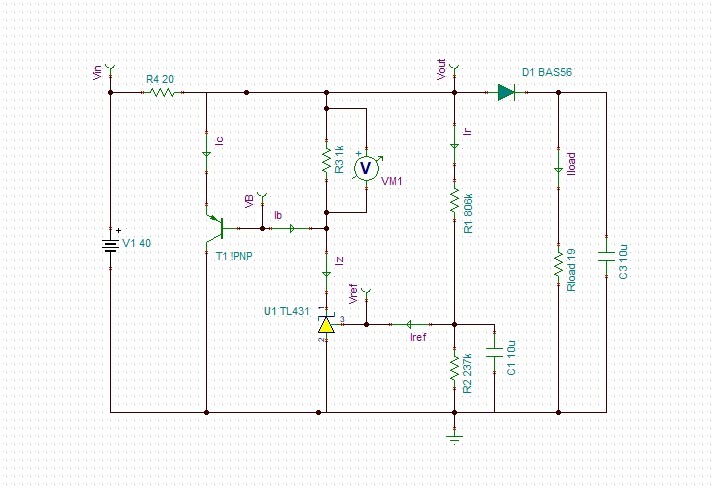I am using TL431 in the application as High Current Shunt Regulator as mentioned in Datasheet.
Vin range (14V to 40V) , Vout = 12V , Load ( 40 to 600 mA).
i would like to understand how does (T1) pnp transistor works in this application .
How do we calculate Ic, R3 and Vout. ?
What is the biasing condition of T1 while Vout is regulated?


